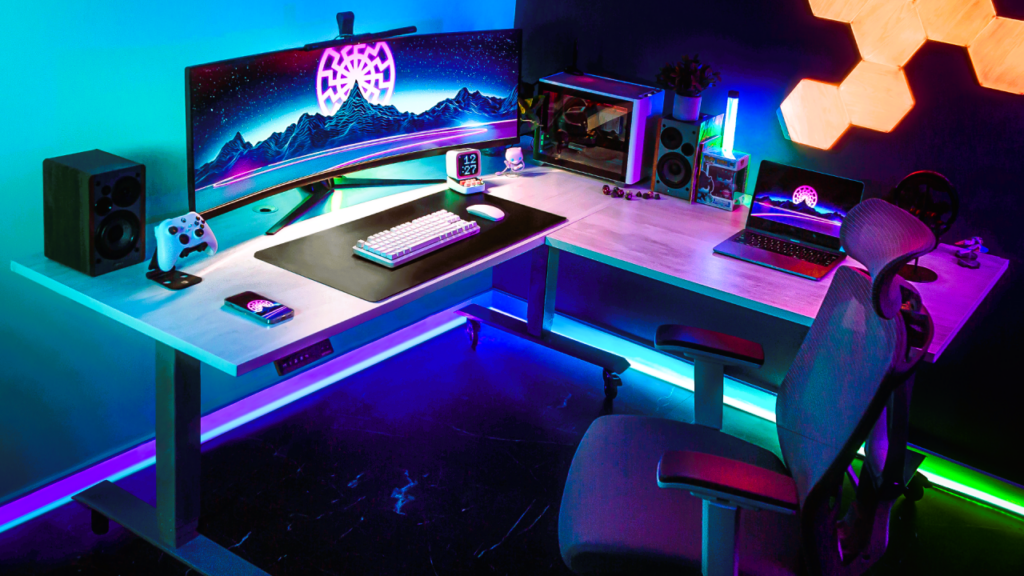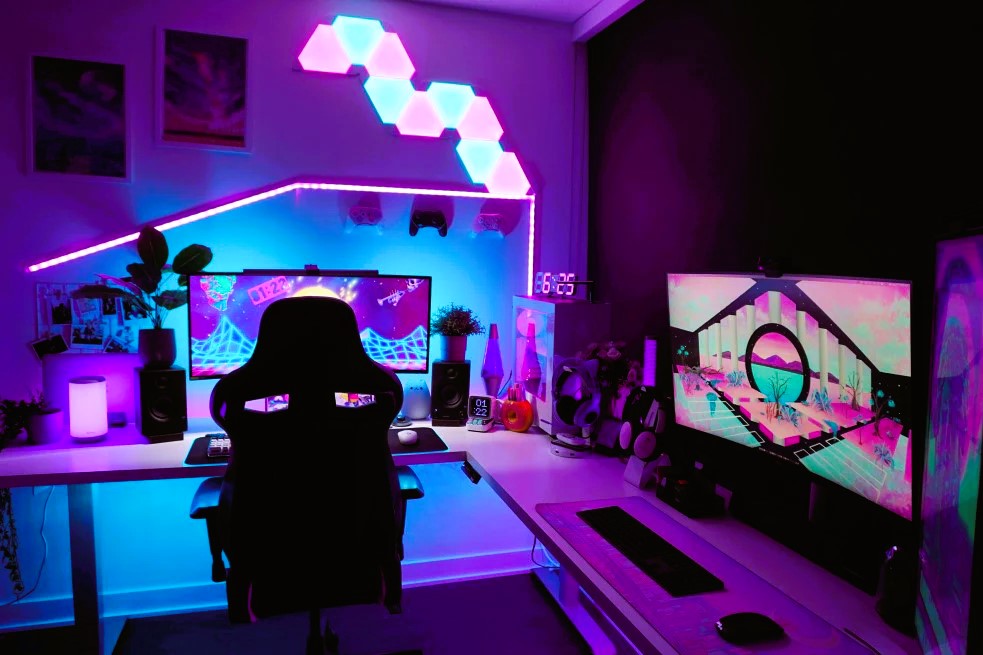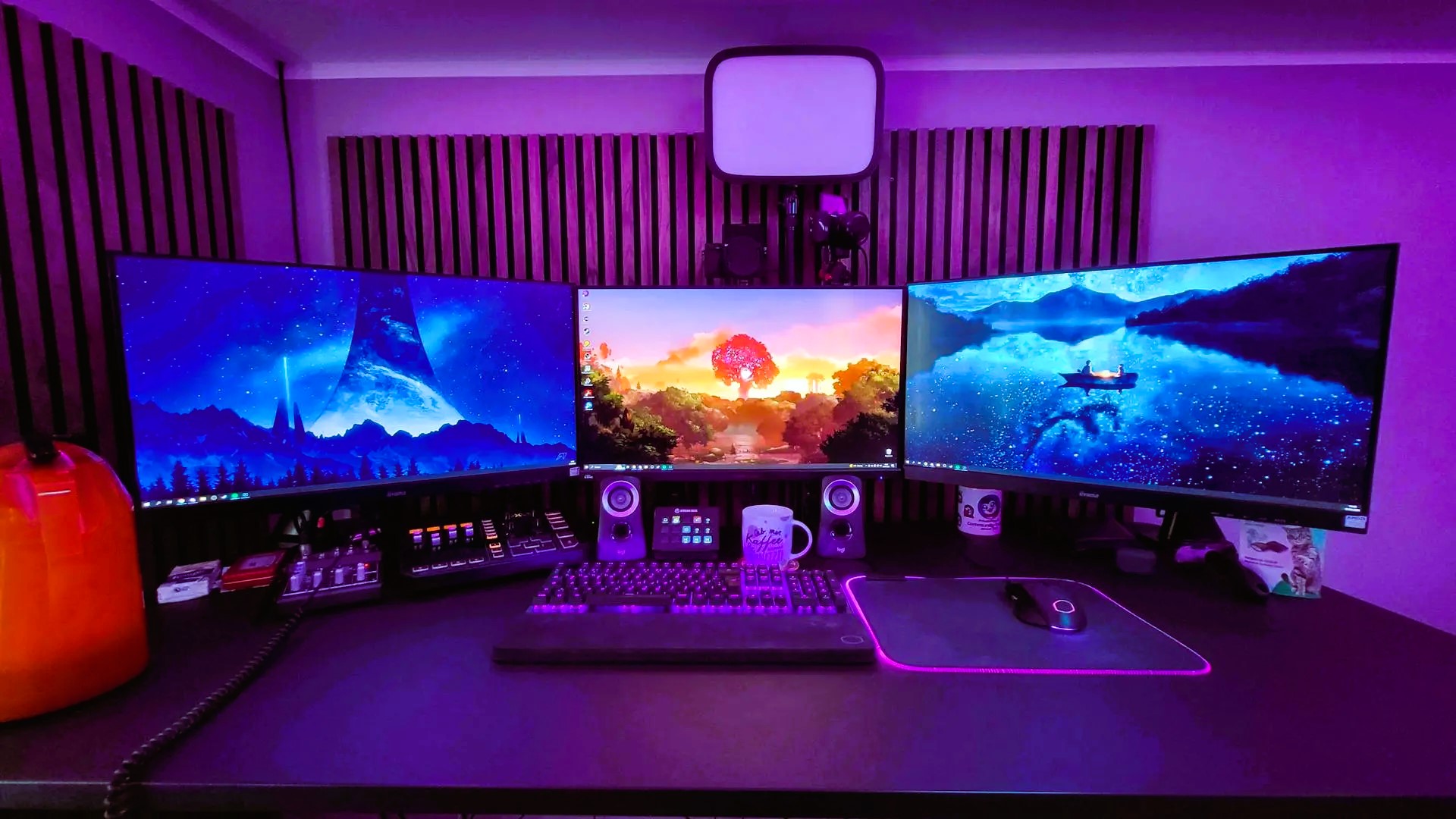Gaming is not just a hobby; for many, it’s a lifestyle. Whether you’re a casual player or a competitive eSports enthusiast, spending long hours at your gaming station can take a toll on your body. The repetitive motions, poor posture, and hours spent sitting can lead to discomfort, eye strain, and even long-term health issues. However, by setting up an ergonomic gaming station, you can protect your health while improving your performance. In this article, we’ll explore the key components of an ergonomic gaming setup that prioritizes comfort, health, and productivity.
Why Ergonomics Matter for Gamers
Ergonomics refers to the design of workspaces, tools, and equipment in a way that fits the user’s needs, improving comfort and reducing the risk of injury. When it comes to gaming, ergonomics is crucial because of the amount of time players spend sitting and interacting with their devices. Poor ergonomics can lead to musculoskeletal issues, eye strain, carpal tunnel syndrome, and other health concerns.
With the right ergonomic setup, you can play for longer periods without compromising your health. The goal is to reduce strain on your body, improve your posture, and create an environment that allows you to perform your best.
1. The Perfect Gaming Chair: Comfort and Support

A good gaming chair is the cornerstone of any ergonomic setup. Spending hours sitting in a chair that doesn’t offer proper support can result in back pain, discomfort, and poor posture. Here’s what to look for in a chair:
Tips for Choosing a Gaming Chair:
- Adjustability: Your chair should have multiple adjustable features, including height, armrest position, lumbar support, and reclining angle. This allows you to customize the chair to your body, ensuring comfort during long gaming sessions.
- Lumbar Support: Proper lumbar support is essential for maintaining the natural curve of your spine. Look for chairs that have adjustable or built-in lumbar support to prevent lower back pain.
- Seat Cushion: The seat should be cushioned but firm, allowing for comfort without sinking too deeply. It should also be wide enough to support your hips properly.
- Armrests: Adjustable armrests are crucial to reduce strain on your shoulders and wrists. Set them at a height that allows your arms to rest comfortably at a 90-degree angle while gaming.
- Materials: Chairs made from breathable, durable materials such as mesh or leather are ideal for long gaming sessions, as they prevent sweating and provide lasting comfort.
2. Monitor Position: Reducing Neck and Eye Strain
The position of your monitor plays a critical role in your overall comfort. Poor monitor positioning can lead to neck strain, eye fatigue, and poor posture. Here’s how to adjust your monitor for optimal ergonomics:
Tips for Proper Monitor Setup:
- Eye Level: The top of your screen should be at eye level, so you don’t have to tilt your head up or down to see it. Your eyes should be about 20-30 inches from the screen, with the monitor tilted slightly upwards to maintain a neutral neck position.
- Screen Height: If you use a desk, a monitor arm or stand can help you adjust the height easily. If your screen is too low, you’ll end up slouching forward, and if it’s too high, you’ll strain your neck by looking up.
- Distance and Angle: The monitor should be at arm’s length, and the angle of the screen should be such that you don’t have to tilt your head or lean forward to view it. A slight tilt, about 15 degrees, can reduce glare and help prevent neck strain.
- Multiple Monitors: If you use multiple monitors, ensure that the primary screen is directly in front of you, and the secondary screens are positioned at an angle. This prevents you from constantly turning your neck, which can cause discomfort.
3. Keyboard and Mouse: Preventing Wrist and Hand Strain
Repetitive motions such as typing and using a mouse can lead to wrist strain and conditions like carpal tunnel syndrome. The right keyboard and mouse setup is key to reducing this risk.
Tips for an Ergonomic Keyboard Setup:
- Keyboard Position: Your keyboard should be positioned so that your elbows are at a 90-degree angle when typing, with your wrists in a neutral, straight position. This prevents wrist strain.
- Keyboard Tilt: Choose a keyboard with an adjustable tilt or use a wrist rest to maintain a straight wrist posture while typing. A flat keyboard layout is generally better for ergonomics than one that is angled upwards.
- Mechanical Keyboards: Mechanical keyboards with responsive keys and low actuation force are easier on your fingers and hands, reducing fatigue and strain during long gaming sessions.
- Split Keyboards: Consider using a split keyboard, which separates the keys into two parts to promote a more natural hand position. These can be more comfortable, especially if you spend hours typing or gaming. Like our articles? Read also about Healthy Snacks for Gamers.
Tips for an Ergonomic Mouse Setup:
- Mouse Position: Your mouse should be placed close to your keyboard to avoid reaching out. Ideally, the mouse should be at the same level as the keyboard, so your wrist remains in a neutral position.
- Ergonomic Mouse: Consider an ergonomic mouse that fits the natural curve of your hand. This type of mouse promotes proper wrist posture and reduces the chances of developing repetitive stress injuries.
- Mouse Sensitivity: Adjust your mouse sensitivity settings so you don’t have to make large hand movements to execute precise commands. A high DPI (dots per inch) setting allows for more accurate control with minimal hand movement.
4. Desk Setup: Keeping Everything Within Reach
Your desk is the foundation of your ergonomic gaming station. A clean and well-organized desk not only helps improve performance but also reduces physical strain by keeping everything within easy reach.
Tips for an Ergonomic Desk Setup:
- Desk Height: Your desk should be at a height where your forearms are parallel to the ground when using your keyboard and mouse. This minimizes strain on your wrists and shoulders.
- Clean and Organized: Keep your gaming equipment, such as controllers, headsets, and cables, organized and within reach. This prevents unnecessary stretching and reaching, which can strain your body.
- Cable Management: Use cable organizers or clips to keep your cables tidy and out of the way. This reduces clutter and ensures you don’t have to twist or bend to untangle wires.
5. Lighting: Protecting Your Eyes

Proper lighting is essential for reducing eye strain, especially during extended gaming sessions. Poor lighting can cause fatigue, headaches, and blurred vision.
Tips for Ideal Gaming Lighting:
- Ambient Lighting: Use soft, indirect lighting in the room to reduce glare on your screen. Avoid harsh overhead lights or direct sunlight, as they can create reflections on your screen, making it harder to see.
- Backlighting: Consider using RGB backlighting or a desk lamp with adjustable brightness to create an immersive gaming environment without straining your eyes.
- Blue Light Filters: Prolonged exposure to blue light emitted by screens can cause eye fatigue. Use software or physical blue light filters to reduce this effect, especially during long sessions at night.
6. Posture: Maintaining Comfort During Gaming Sessions
Even with the best ergonomic setup, poor posture can undo all your efforts. Maintaining proper posture throughout your gaming session is crucial for long-term health.
Tips for Maintaining Good Posture:
- Sit Upright: Avoid slouching or leaning forward while gaming. Sit back in your chair with your feet flat on the ground, knees at a 90-degree angle, and your back straight against the chair’s backrest.
- Take Breaks: Every 30-60 minutes, take a short break to stretch and move around. This reduces muscle fatigue, improves circulation, and helps prevent stiffness.
- Stretching: Incorporate stretches that target the neck, shoulders, and wrists to alleviate tension. Simple stretches can improve blood flow and reduce muscle strain.
Creating the best ergonomic gaming station is all about balancing comfort, performance, and health. With the right gaming chair, monitor setup, keyboard, and mouse configuration, you can minimize strain and maximize comfort. Incorporating proper lighting, desk organization, and good posture will further enhance your gaming experience, allowing you to play for longer without discomfort or injury.
Remember, an ergonomic gaming station not only boosts your physical well-being but also improves your gaming performance. A comfortable player is a focused player, and by investing in the right setup, you’ll ensure that your gaming sessions remain enjoyable for years to come.
For more on the standards of ergonomic design, visit Wikipedia on Ergonomics.



